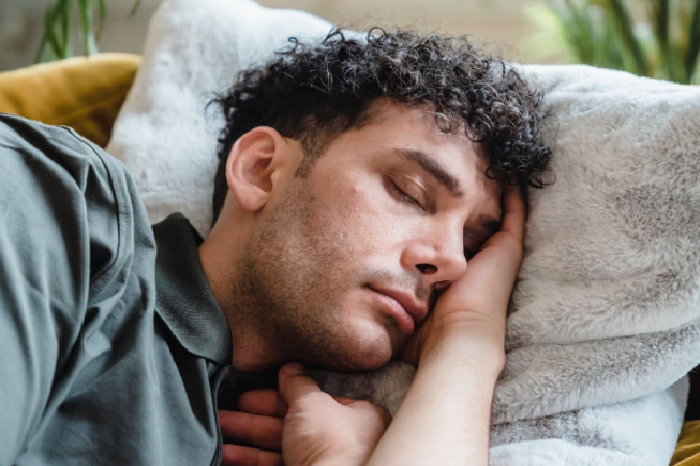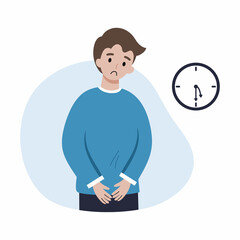
Sleep is a fundamental aspect of our overall well-being. Yet, millions of people struggle with sleep disorders, affecting their quality of life, mental health, and physical health. The good news is that many of these conditions are treatable, and in some cases, preventable. From sleep apnea to insomnia, understanding the root causes of sleep disorders and finding effective solutions can lead to better rest and improved health.
For those suffering from sleep-related issues, finding the perfect mattress to help combat sleep disorders can play a vital role in improving sleep quality. Let’s dive into some of the most common sleep disorders and explore the best solutions to help you get the rest you deserve.
1. Insomnia
What is Insomnia?
Insomnia is one of the most common sleep disorders, characterized by difficulty falling asleep or staying asleep, even when the opportunity for rest is present. It can be acute (short-term) or chronic (long-term). Chronic insomnia can last for months or even years, severely impacting quality of life.
Causes of Insomnia:
Solutions for Insomnia:
- Sleep hygiene: Maintain a regular sleep schedule, limit naps, and create a relaxing bedtime routine.
- Cognitive Behavioral Therapy (CBT-I): This is a structured program that helps people identify and replace thoughts or behaviors that cause or worsen insomnia.
- Avoid stimulants: Reduce caffeine and nicotine intake in the afternoon and evening.
- Comfortable sleep environment: A cool, dark, and quiet bedroom can improve your ability to fall asleep. Investing in a comfortable mattress can make a significant difference in sleep quality.
- Relaxation techniques: Meditation, deep breathing exercises, and progressive muscle relaxation can help prepare your body for rest.
2. Sleep Apnea
What is Sleep Apnea?
Sleep apnea is a serious sleep disorder where breathing repeatedly stops and starts throughout the night. The most common form is obstructive sleep apnea (OSA), where the throat muscles relax and block the airway. This causes loud snoring and gasping for air, often waking the sleeper multiple times without their awareness.
Causes of Sleep Apnea:
- Excess weight or obesity
- Neck circumference and structural issues (e.g., enlarged tonsils)
- Smoking
- Family history of sleep apnea
- Nasal congestion
Solutions for Sleep Apnea:
- Continuous Positive Airway Pressure (CPAP): A CPAP machine provides steady air pressure to keep the airways open during sleep.
- Lifestyle changes: Losing weight, quitting smoking, and avoiding alcohol can improve or eliminate sleep apnea symptoms.
- Positional therapy: Sleeping on your side rather than your back can prevent airway blockage.
- Mouthpieces: Oral appliances can adjust the position of the jaw and tongue to keep the airway open.
- Perfect mattress support: A mattress that supports proper spinal alignment can help prevent airway collapse, reducing the severity of sleep apnea symptoms.
3. Restless Leg Syndrome (RLS)
What is Restless Leg Syndrome?
Restless Leg Syndrome (RLS) is a neurological disorder that causes an irresistible urge to move the legs, usually accompanied by uncomfortable sensations. These symptoms tend to worsen at night, making it difficult to fall or stay asleep.
Causes of Restless Leg Syndrome:
- Genetics
- Iron deficiency
- Chronic diseases (e.g., kidney disease, diabetes)
- Medications (antidepressants, antihistamines)
- Pregnancy
Solutions for Restless Leg Syndrome:
- Medications: Doctors may prescribe dopamine agonists, iron supplements, or anti-seizure medications to manage symptoms.
- Lifestyle changes: Regular exercise, stretching, and massaging the legs can relieve discomfort.
- Sleep environment adjustments: Ensuring a cool, comfortable bedroom and avoiding heavy bedding that restricts movement can help alleviate RLS symptoms.
- Mattress selection: Opt for a responsive mattress that allows easy movement and prevents excessive heat buildup, which can worsen RLS.
4. Narcolepsy
What is Narcolepsy?
Narcolepsy is a chronic neurological disorder that affects the brain’s ability to regulate sleep-wake cycles. Individuals with narcolepsy may experience excessive daytime sleepiness and sudden episodes of falling asleep, sometimes even in the middle of activities like talking or driving.
Causes of Narcolepsy:
- Genetic predisposition
- Autoimmune response affecting brain cells that produce hypocretin, a sleep-regulating chemical
- Trauma to the brain, infections, or tumors
Solutions for Narcolepsy:
- Medication: Stimulants like modafinil can help control daytime sleepiness, while antidepressants or sodium oxybate may reduce cataplexy (sudden loss of muscle control).
- Regular sleep schedule: Establishing a consistent bedtime and wake-up time can help improve the quality of sleep.
- Short naps: Scheduling short naps during the day can help manage daytime drowsiness.
- Create a sleep-friendly environment: Invest in a mattress that provides adequate support and reduces disturbances throughout the night.
5. Sleepwalking (Somnambulism)
What is Sleepwalking?
Sleepwalking is a parasomnia, or abnormal behavior during sleep, where individuals walk or perform other activities while still in a state of sleep. Sleepwalking typically occurs during deep sleep and is more common in children, though it can persist into adulthood.
Causes of Sleepwalking:
- Sleep deprivation
- Stress and anxiety
- Fever or illness
- Certain medications (e.g., sedatives, sleep aids)
- Genetics
Solutions for Sleepwalking:
- Improved sleep hygiene: Ensure you get enough restful sleep to reduce the likelihood of sleepwalking episodes.
- Limit stress: Incorporate relaxation techniques such as mindfulness or deep breathing before bedtime.
- Address underlying conditions: Treat any medical issues, such as sleep apnea or RLS, which can trigger sleepwalking.
- Safe sleep environment: Create a safe bedroom by removing sharp objects, locking doors and windows, and using motion detectors if necessary to prevent accidents.
- Sleep comfortably: A comfortable mattress can contribute to more restorative sleep, which may help reduce the frequency of sleepwalking episodes.
6. Circadian Rhythm Disorders
What are Circadian Rhythm Disorders?
These disorders occur when the body's internal clock is misaligned with the natural day-night cycle. The most common forms are delayed sleep phase disorder (difficulty falling asleep and waking up on time) and shift work disorder (common in people who work night shifts or irregular hours).
Causes of Circadian Rhythm Disorders:
- Irregular work schedules
- Exposure to light during the night
- Jet lag
- Inconsistent sleep habits
Solutions for Circadian Rhythm Disorders:
- Light therapy: Exposure to bright light in the morning or use of lightboxes can help reset your internal clock.
- Consistent schedule: Maintaining a regular bedtime and wake-up time, even on weekends, can help regulate your circadian rhythm.
- Melatonin supplements: Taking melatonin in the evening can assist in adjusting your sleep-wake cycle.
- Sleep-friendly environment: A dark, quiet room and a mattress that supports deep sleep can help realign your body’s natural rhythm.
Conclusion
Sleep disorders can have a profound impact on daily life, but most are treatable with the right approach. Identifying the cause of your sleep difficulties and implementing targeted solutions—whether through lifestyle changes, medical intervention, or environmental adjustments—can lead to significant improvements.
In many cases, finding the perfect mattress to help combat sleep disorders can make a world of difference in achieving better sleep quality. Whether you’re dealing with insomnia, sleep apnea, or restless leg syndrome, ensuring you have a comfortable, supportive sleep surface is a crucial step in your journey toward restful nights and better overall health.







